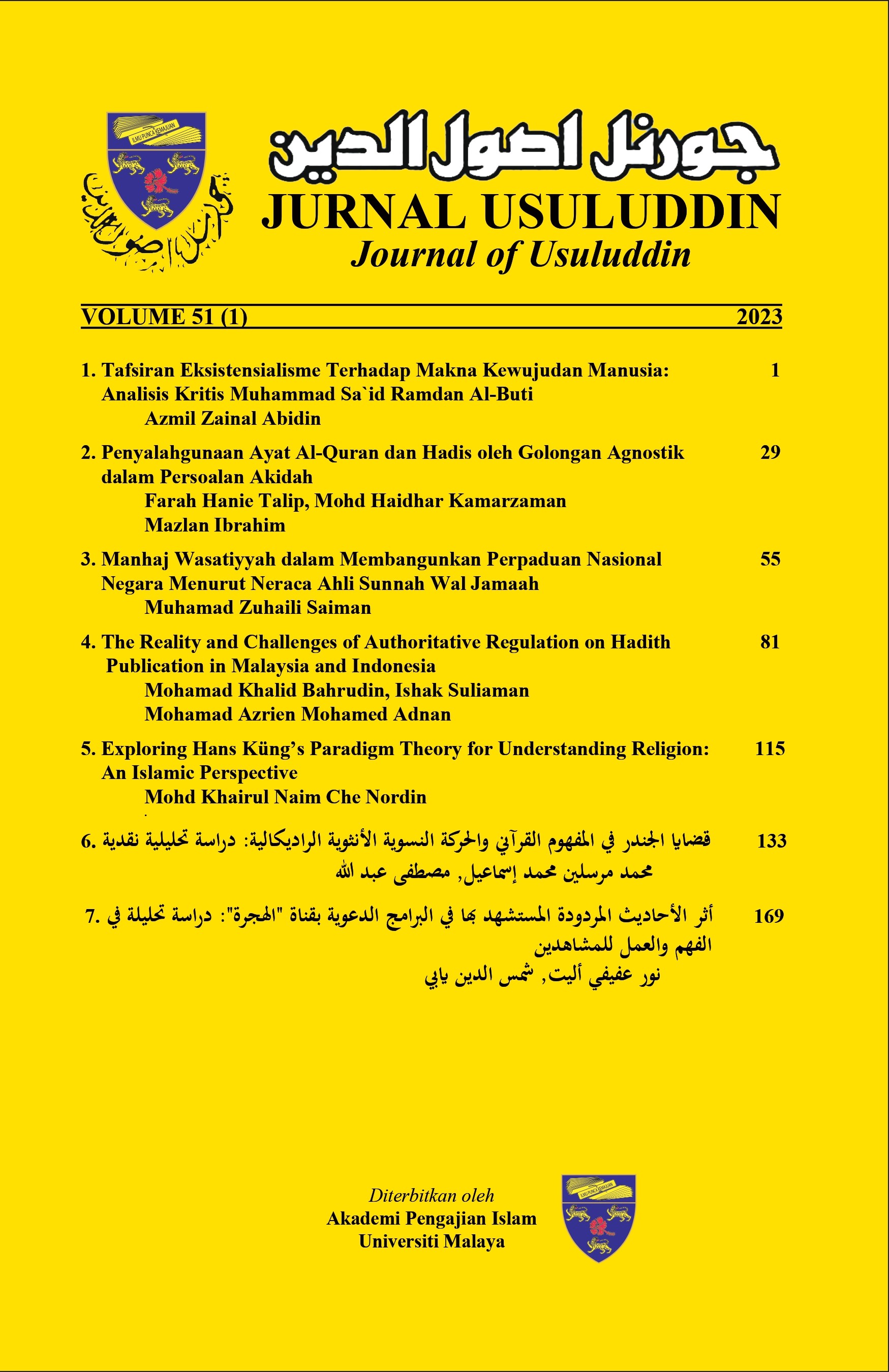Tafsiran Eksistensialisme Terhadap Makna Kewujudan Manusia: Analisis Kritis Muhammad Sa`id Ramdan Al-Buti An Existentialist Interpretation of The Meaning of Human Existence: A Critical Analysis of Muhammad Sa`id Ramdan Al-Buti
Main Article Content
Abstract
Philosophical discussions have attempted to understand the human identity through various interpretations. After the First and Second World Wars, existentialism that focussed on aspects of the human existence as a central theme of philosophy emerged. Man is ‘thrown’ into this world and is 'punished' in order to be free. Aguish and death foreshadow man who is forced to create meaning and purpose in life. Freedom is considered the 'essence' of human beings who have responsibilities thus are required to make decisions based on freedom of choices. This article identified the main premise of existentialism in interpreting the meaning of human existence. The article also evaluated the interpretation based on Muhammad Sa`id Ramadan al-Buti's perspective through a critical analysis. The writing was based on literature research through the documentation method in collecting data related to the research question and the data analysis method, which is a process to detect the form of data in order to make interpretations. The understanding of existentialism was found to be more dominated by philosophical and psychological speculation due to the experiences of modern human suffering. From the epistemological aspect, it also influenced the metaphysical and axiological ontological perspectives that led to the concept of absolute human freedom in thinking and actions.
